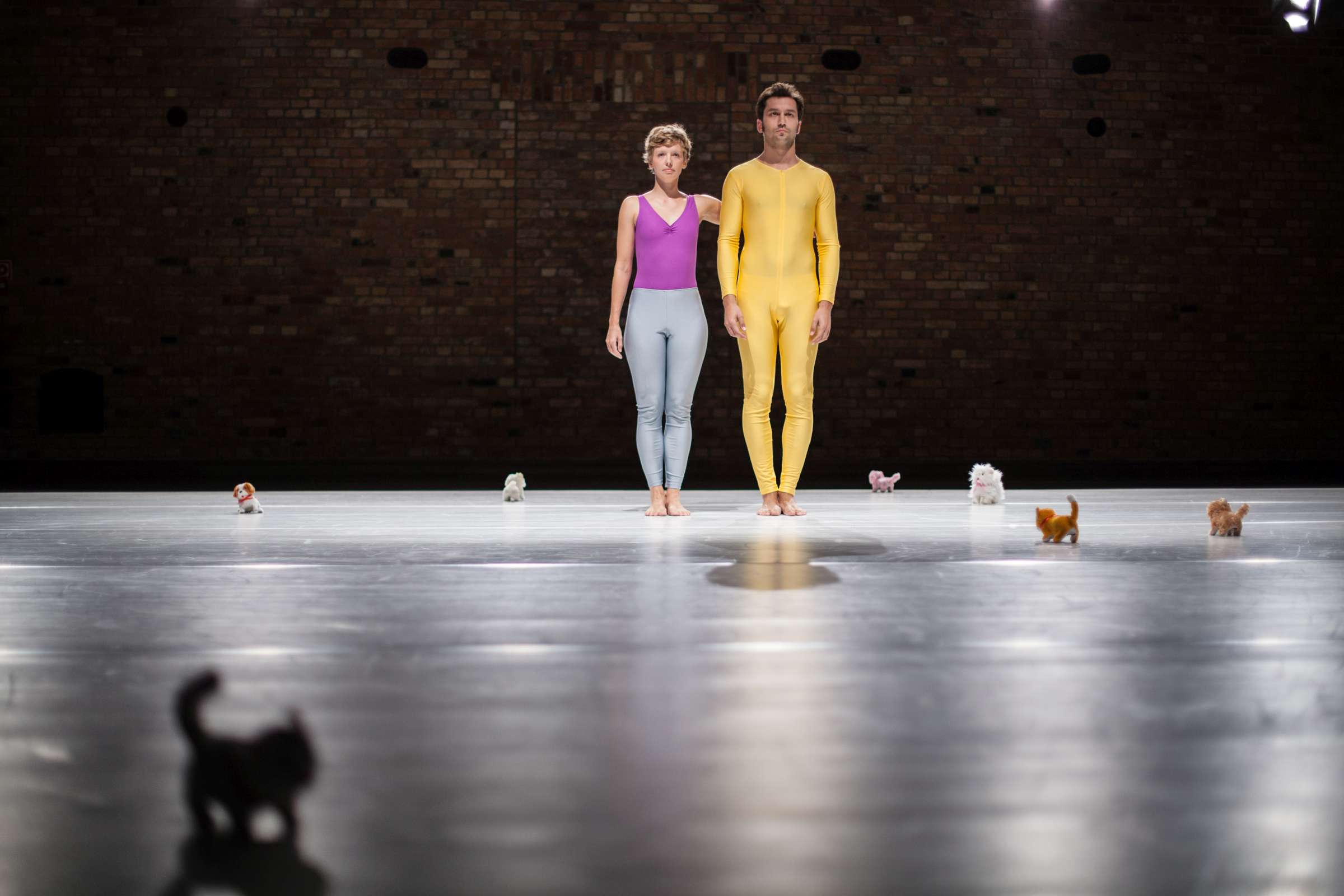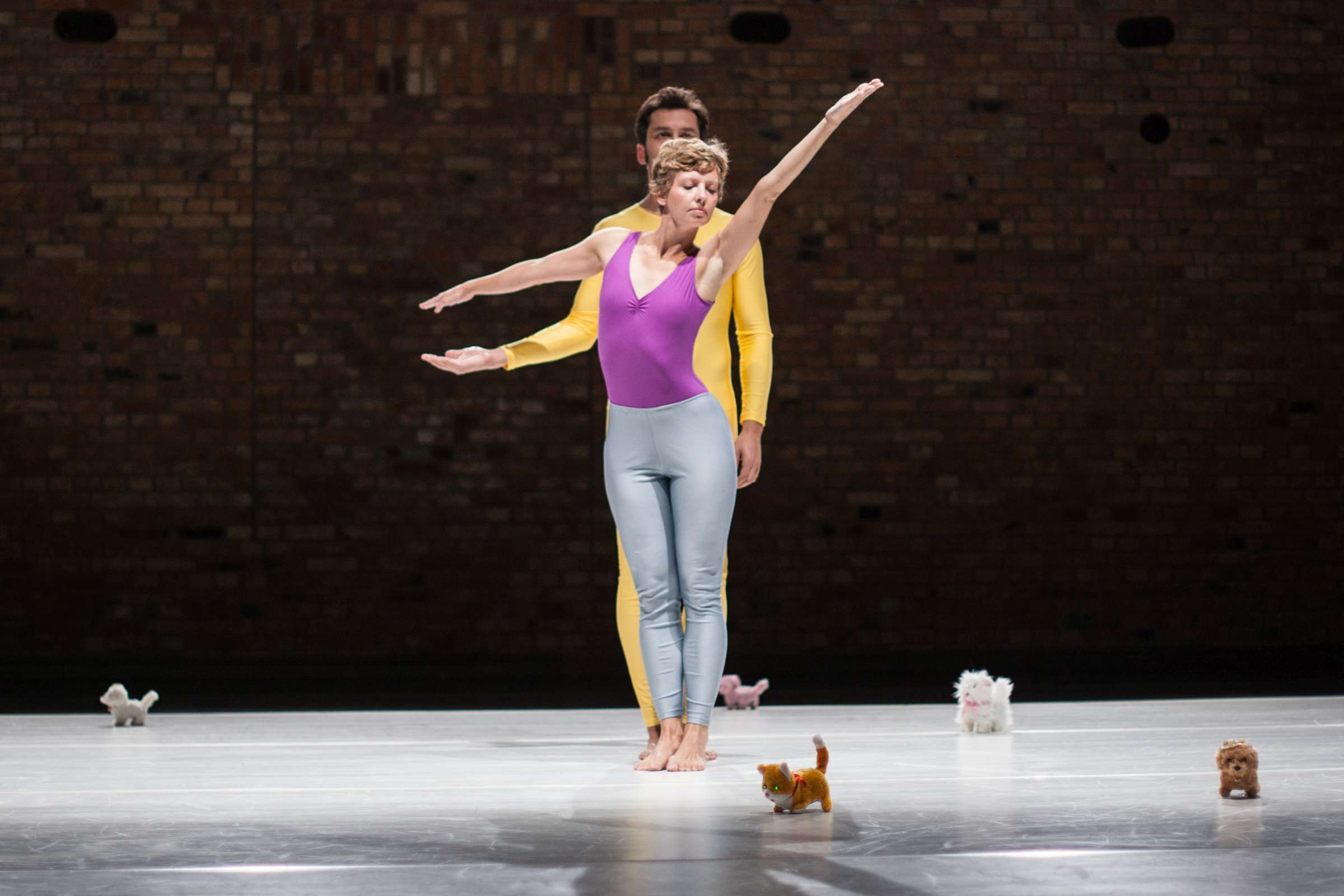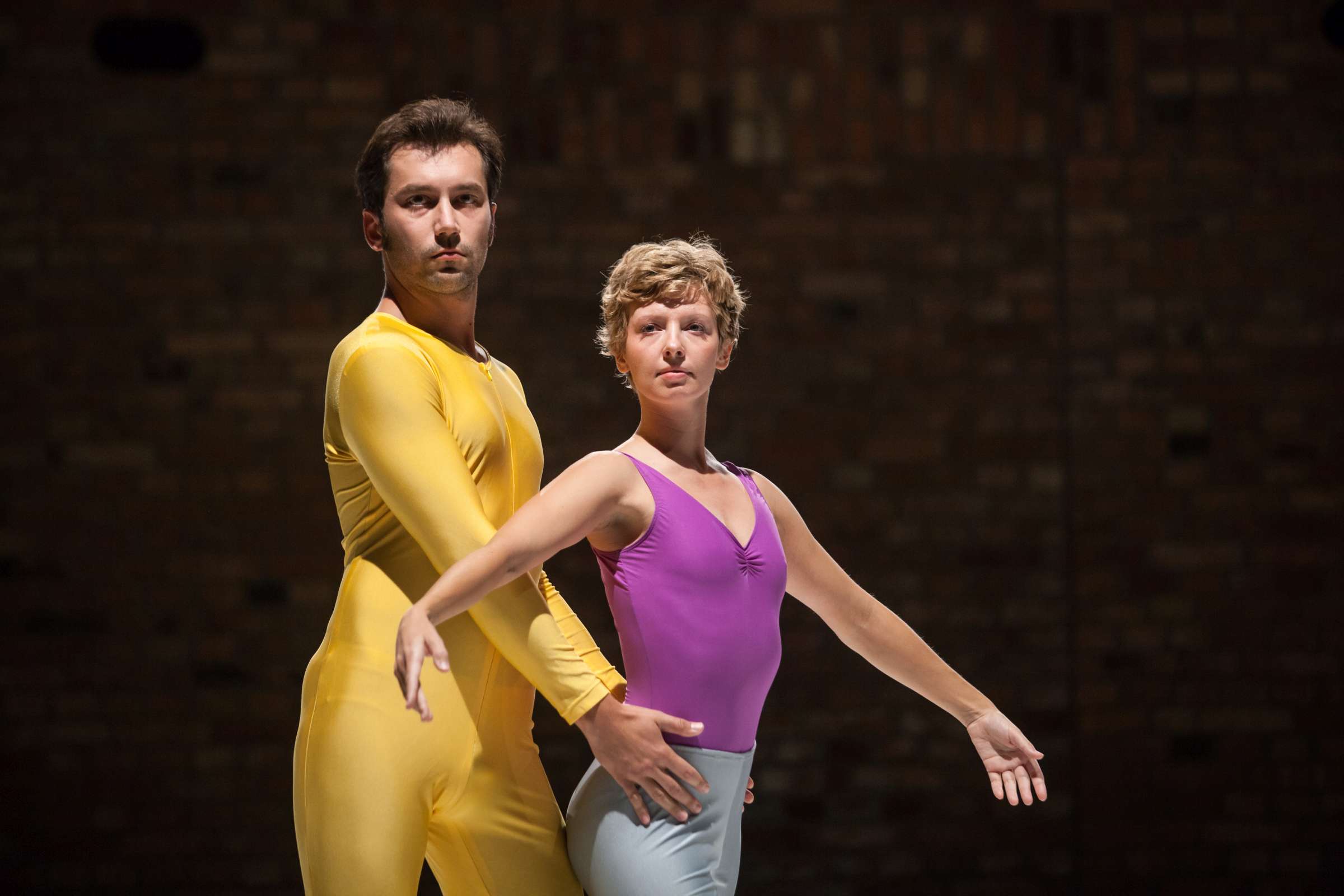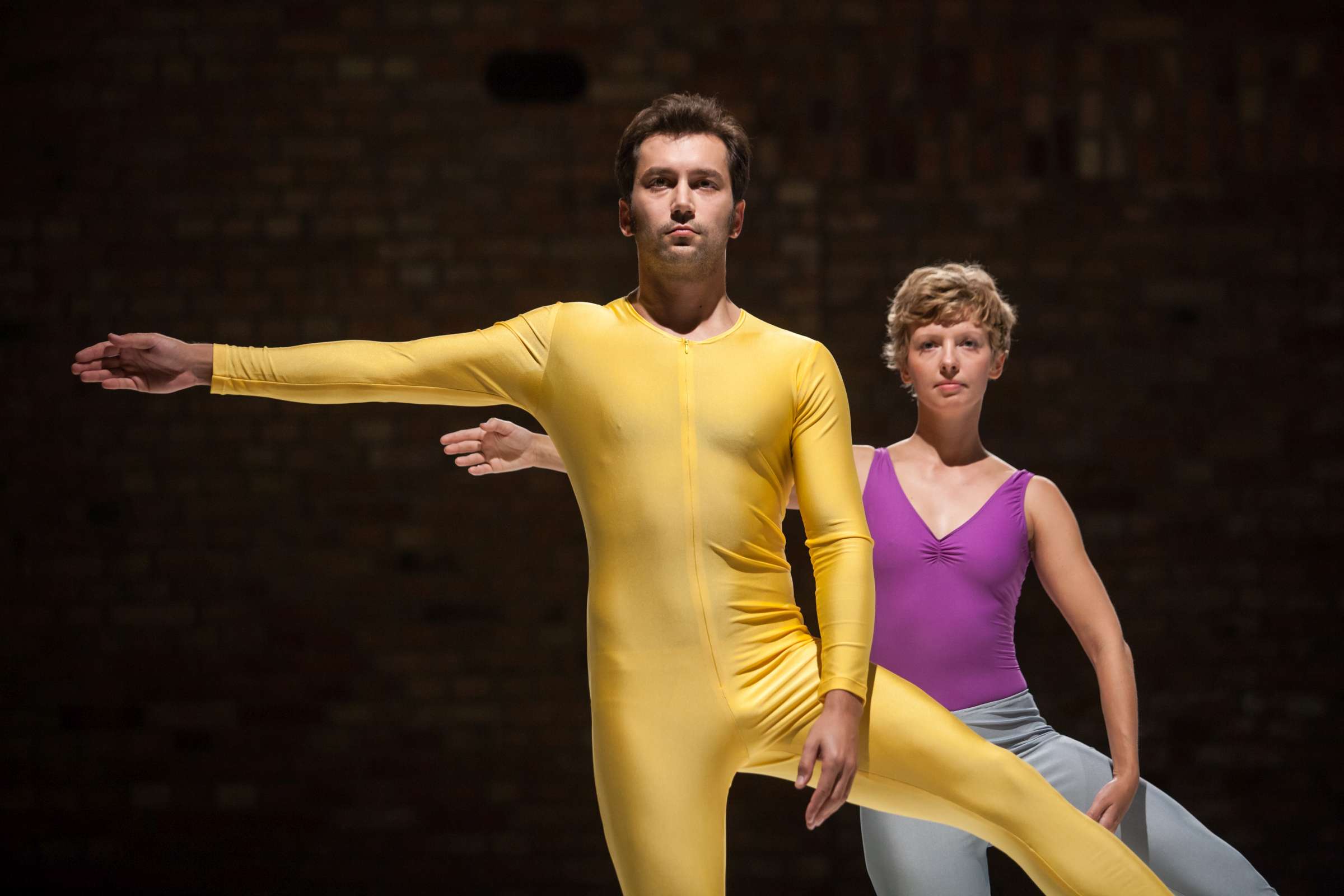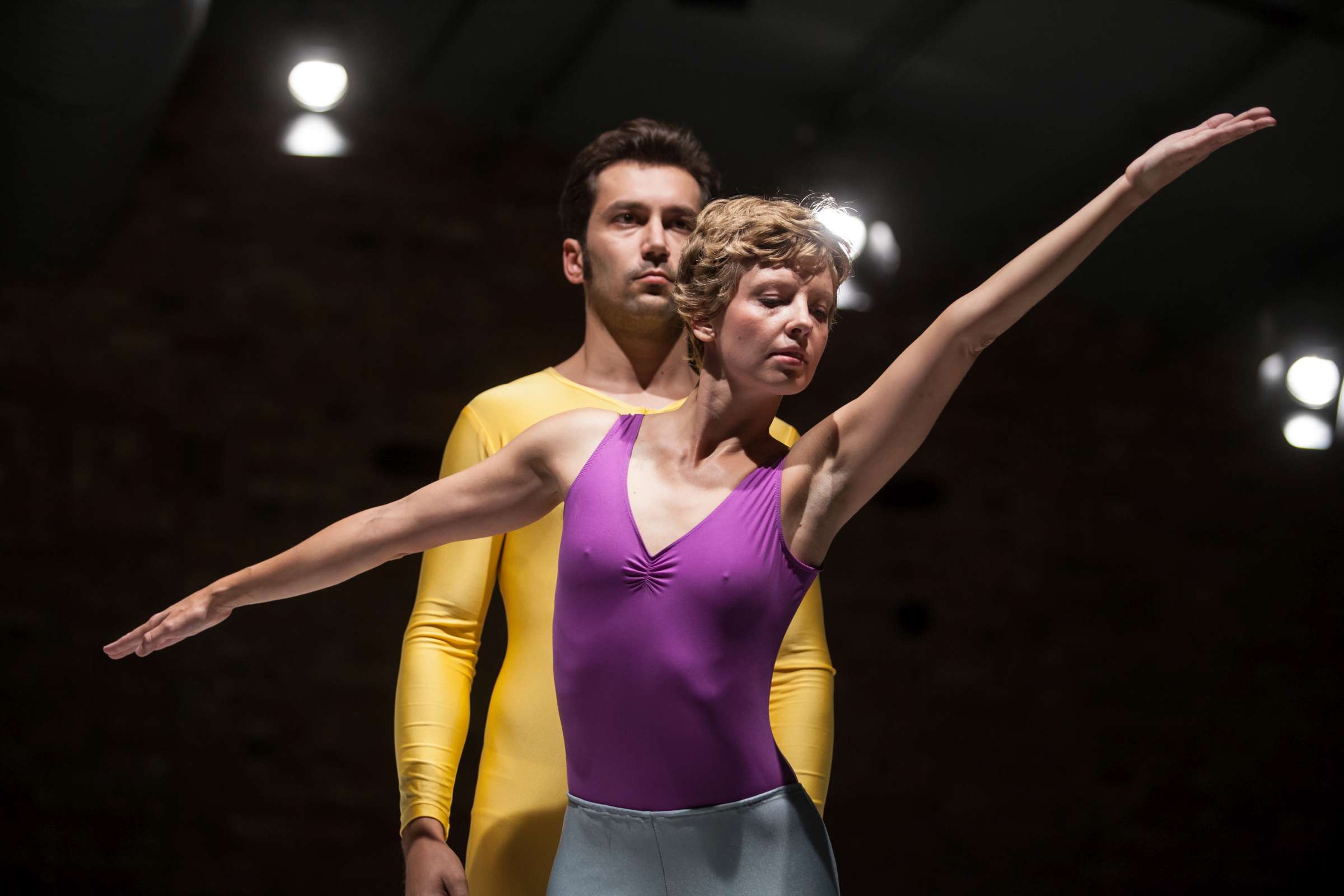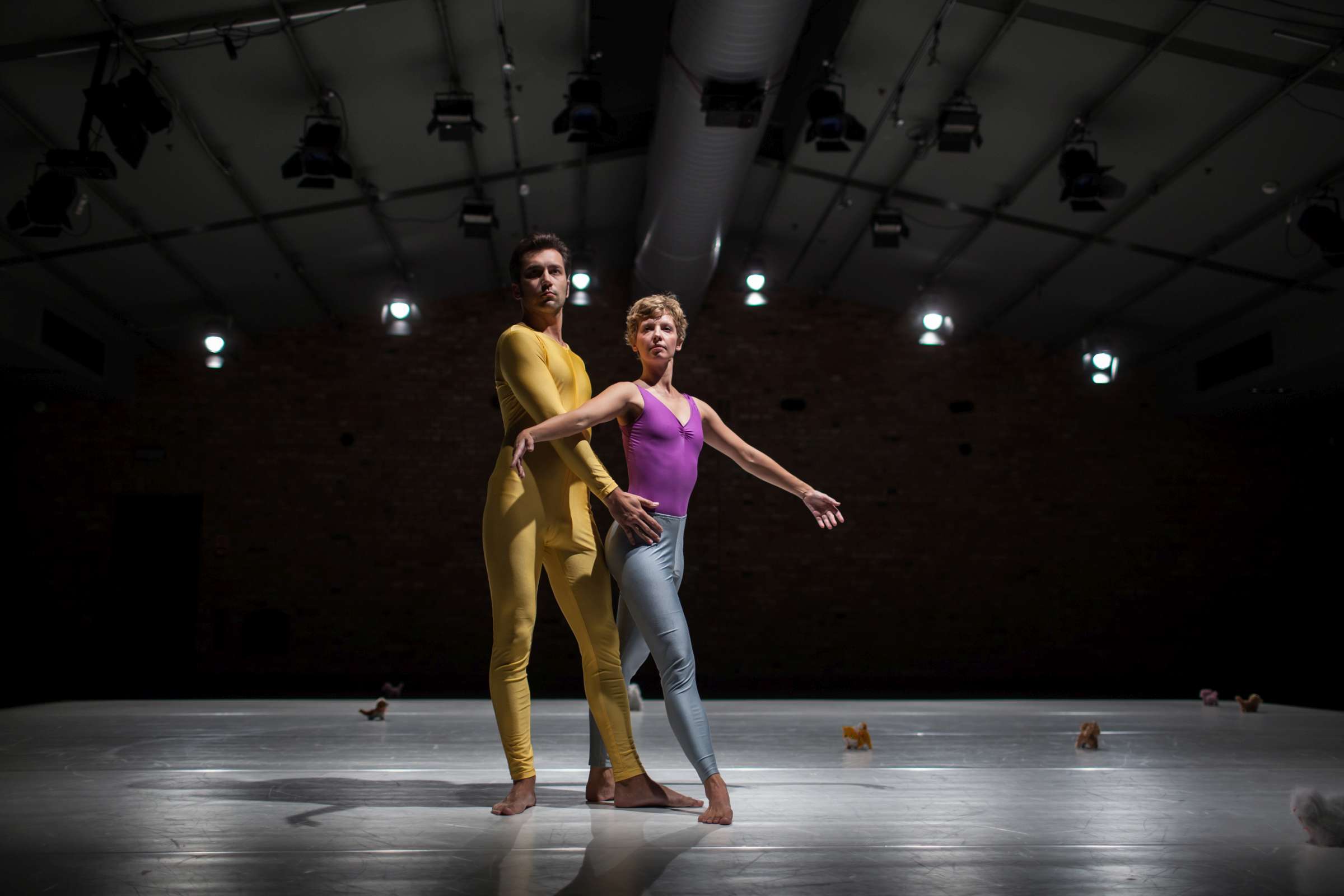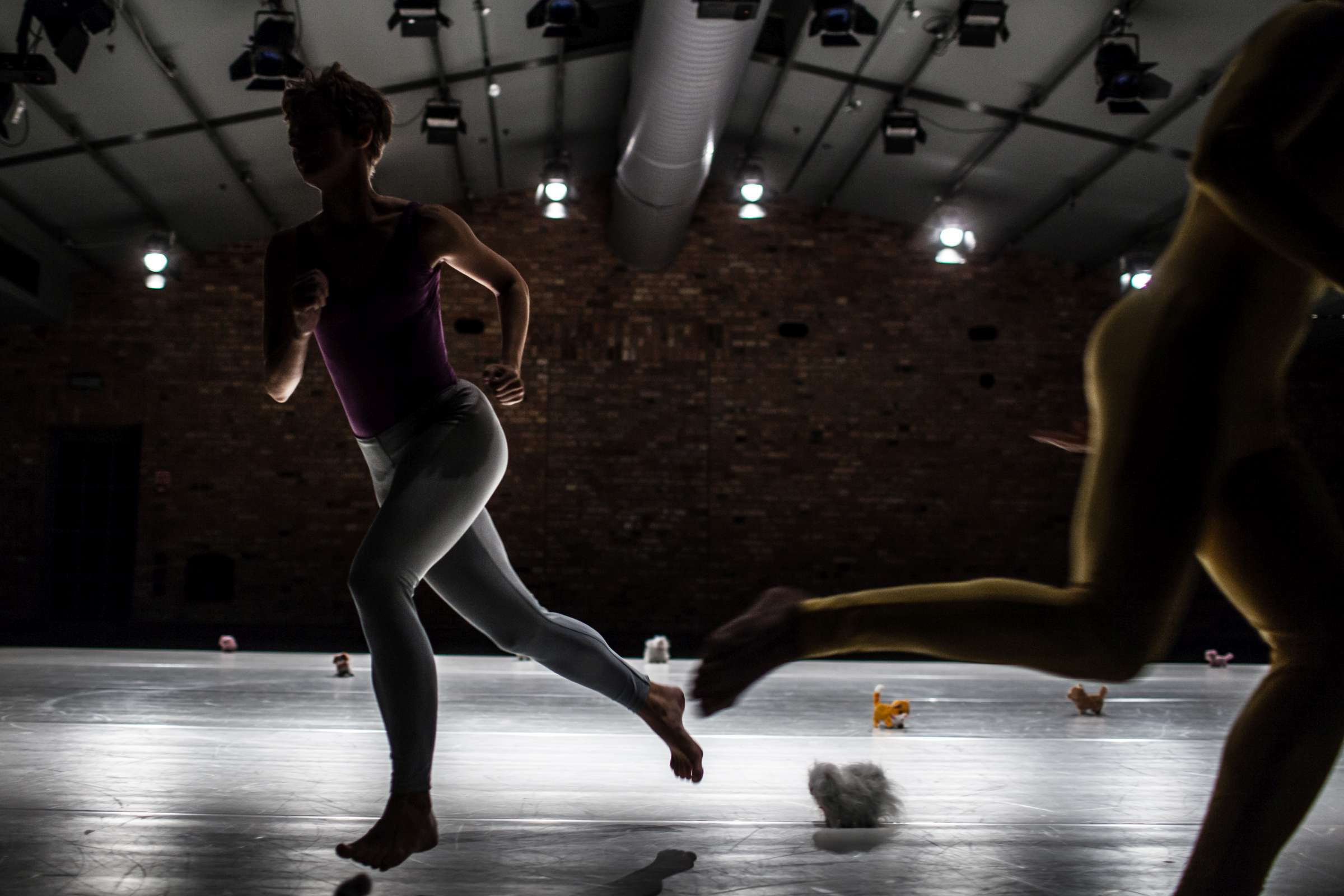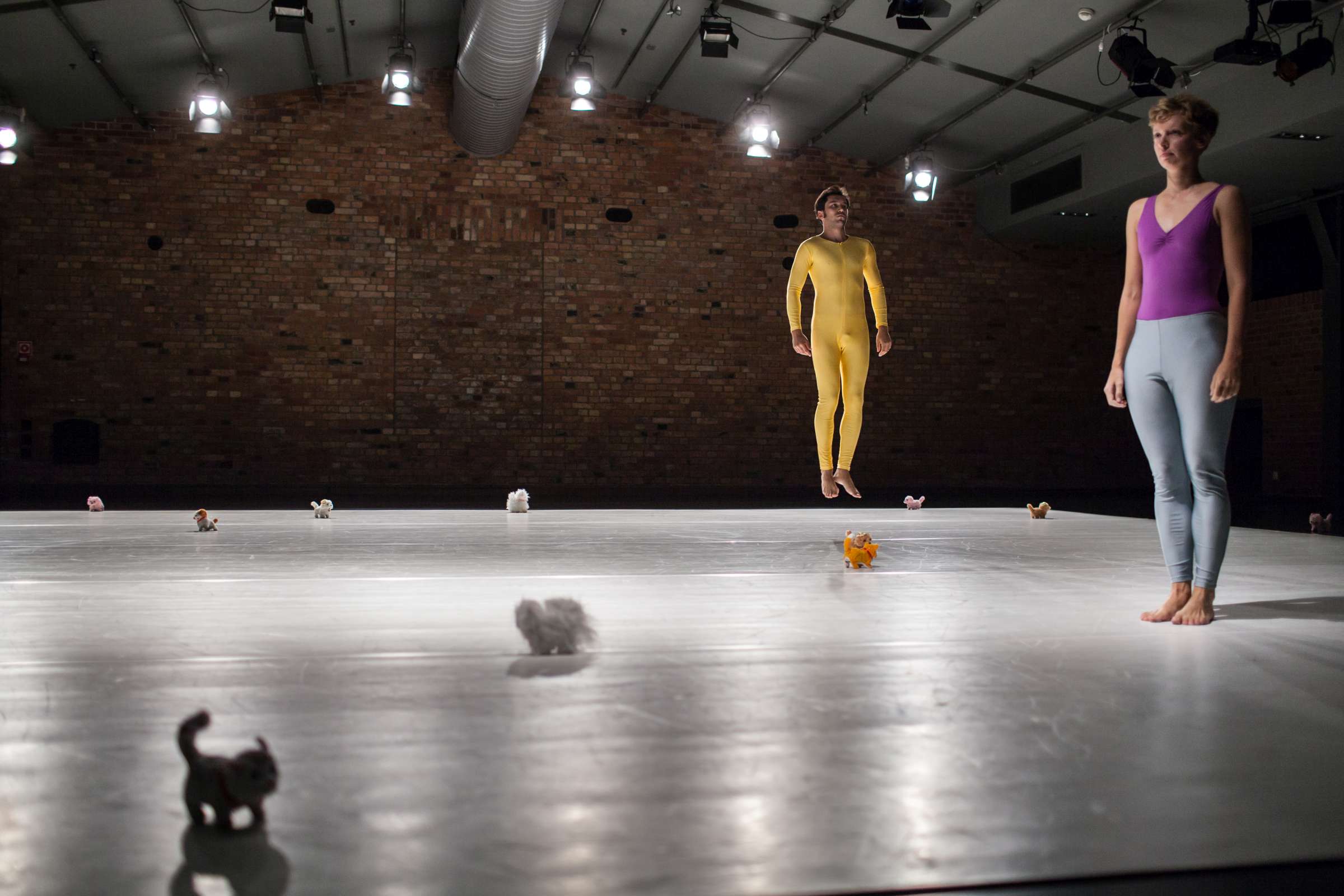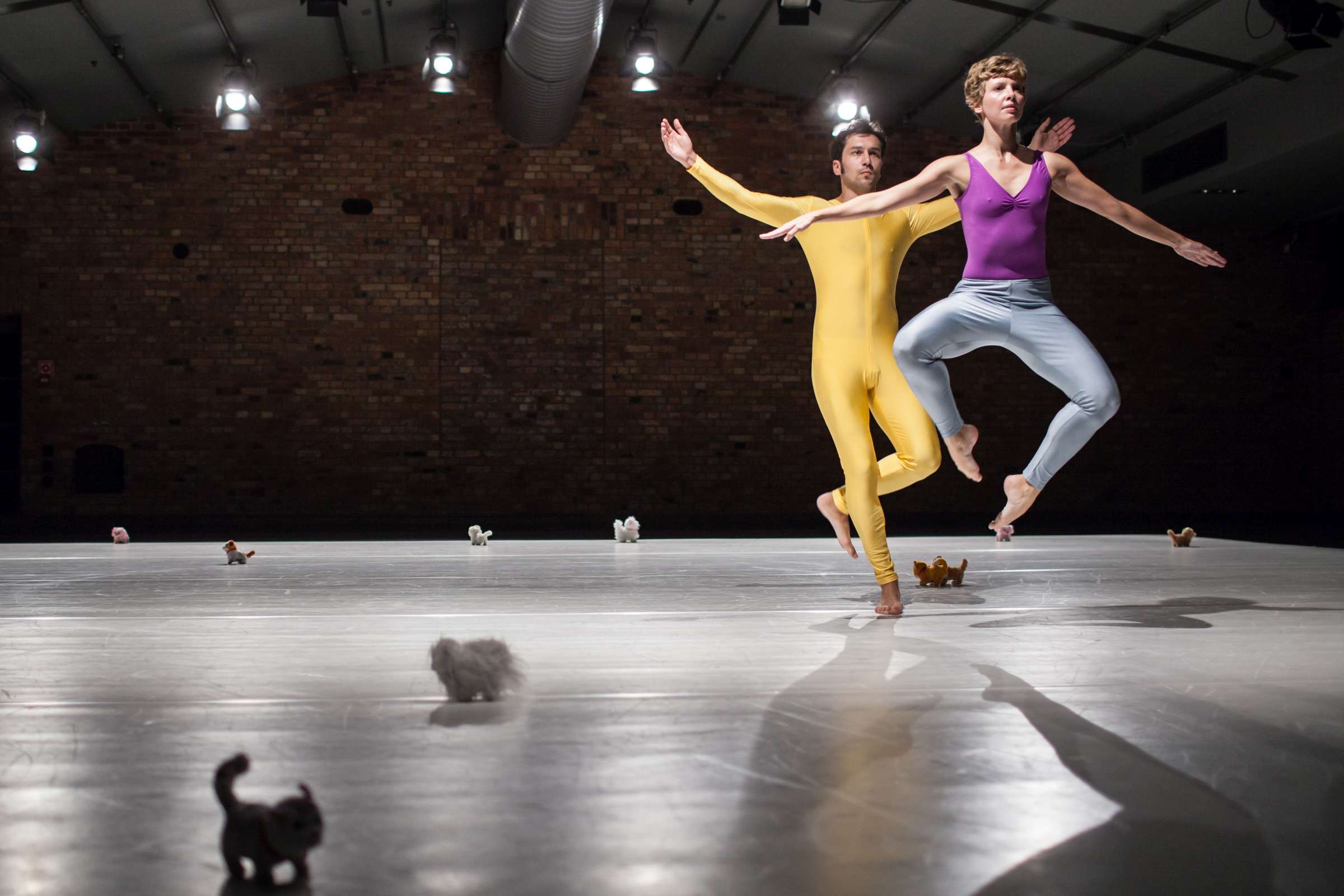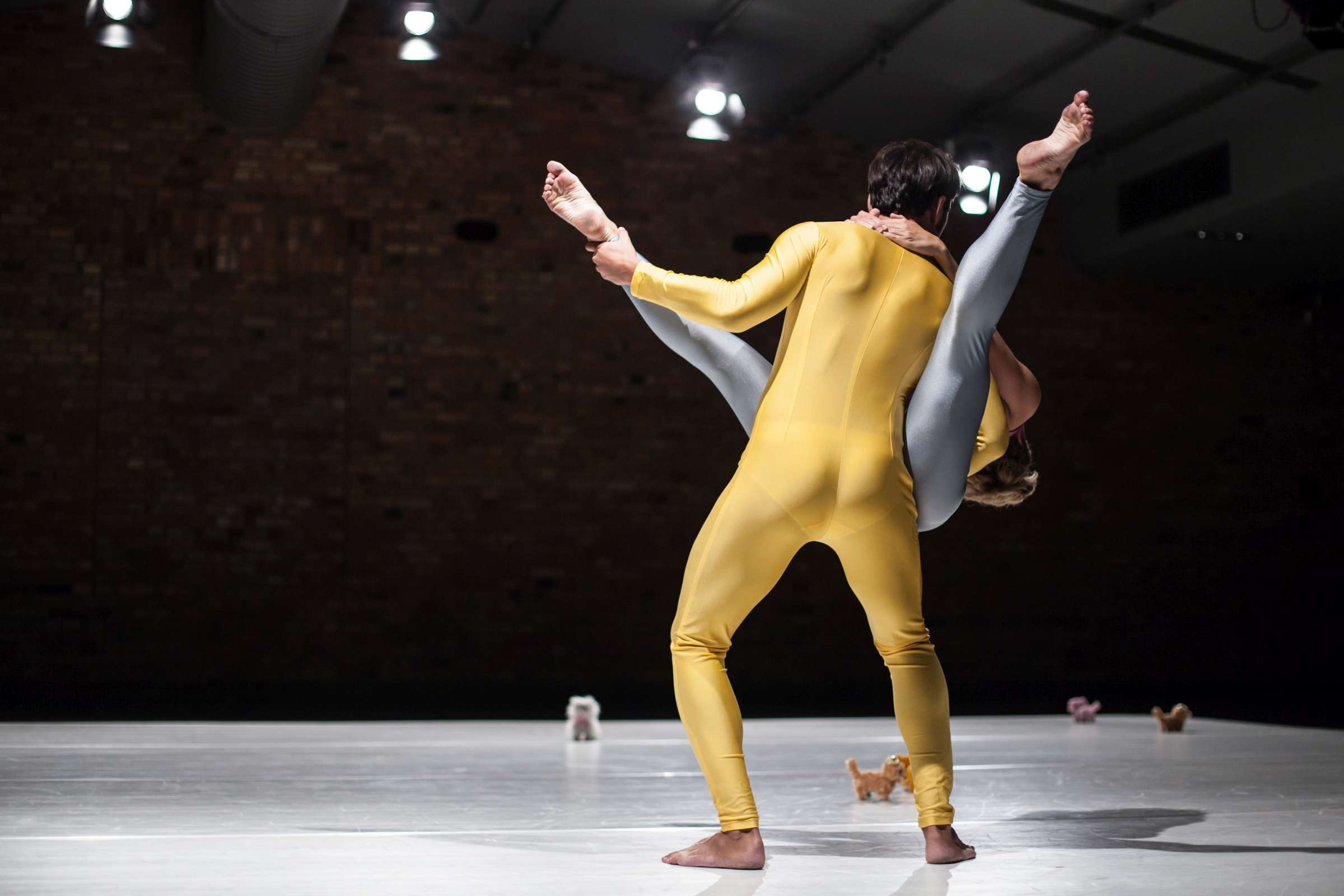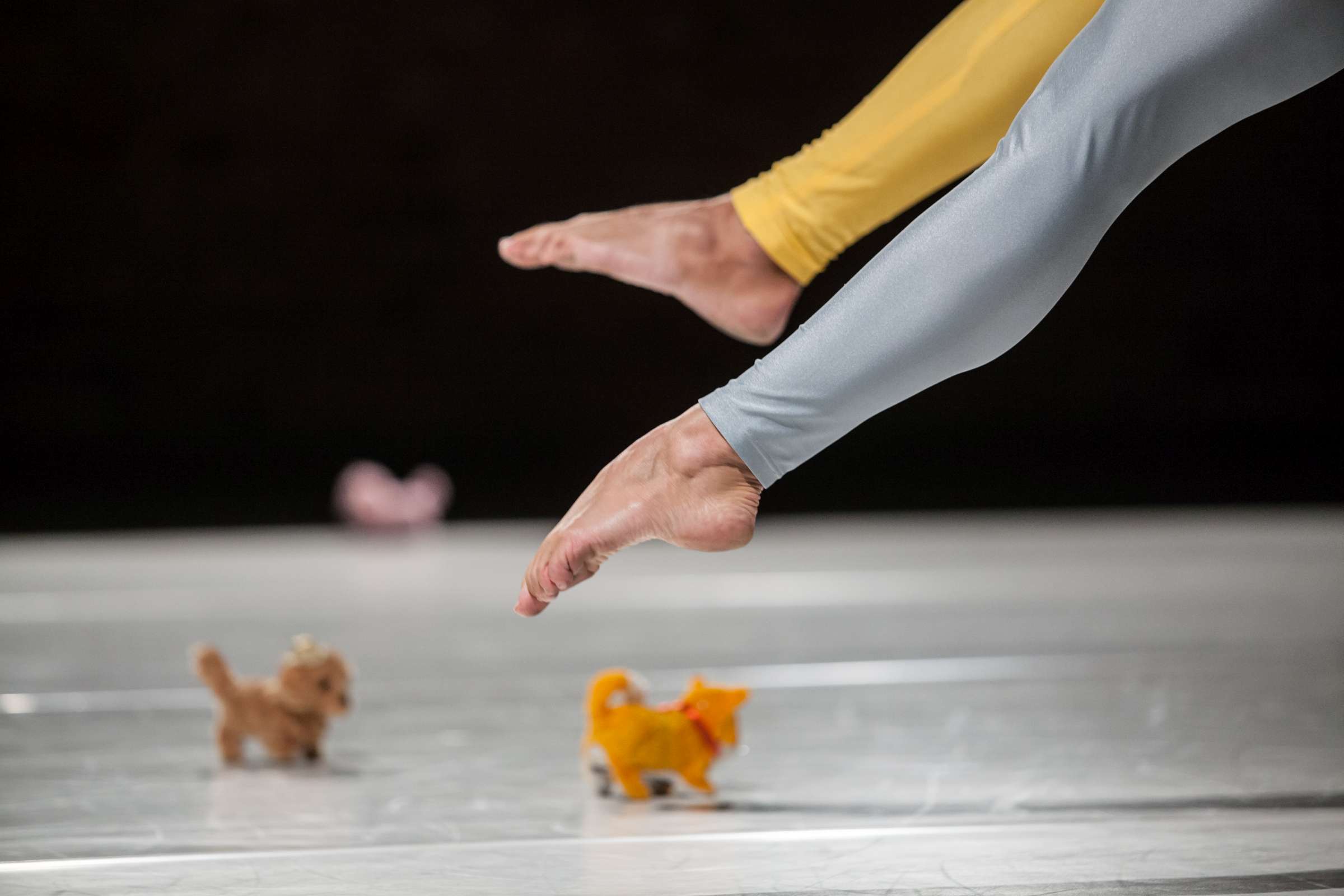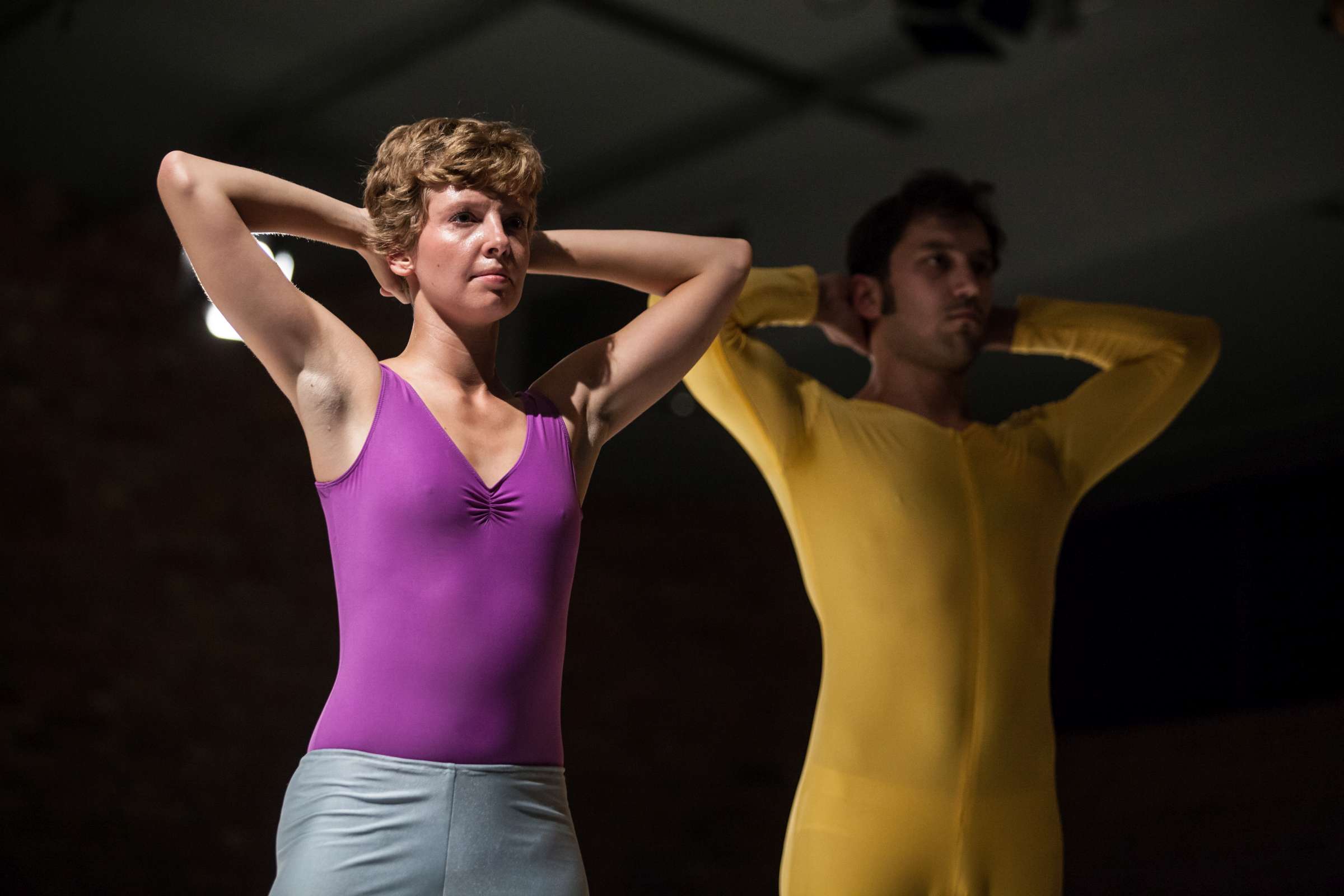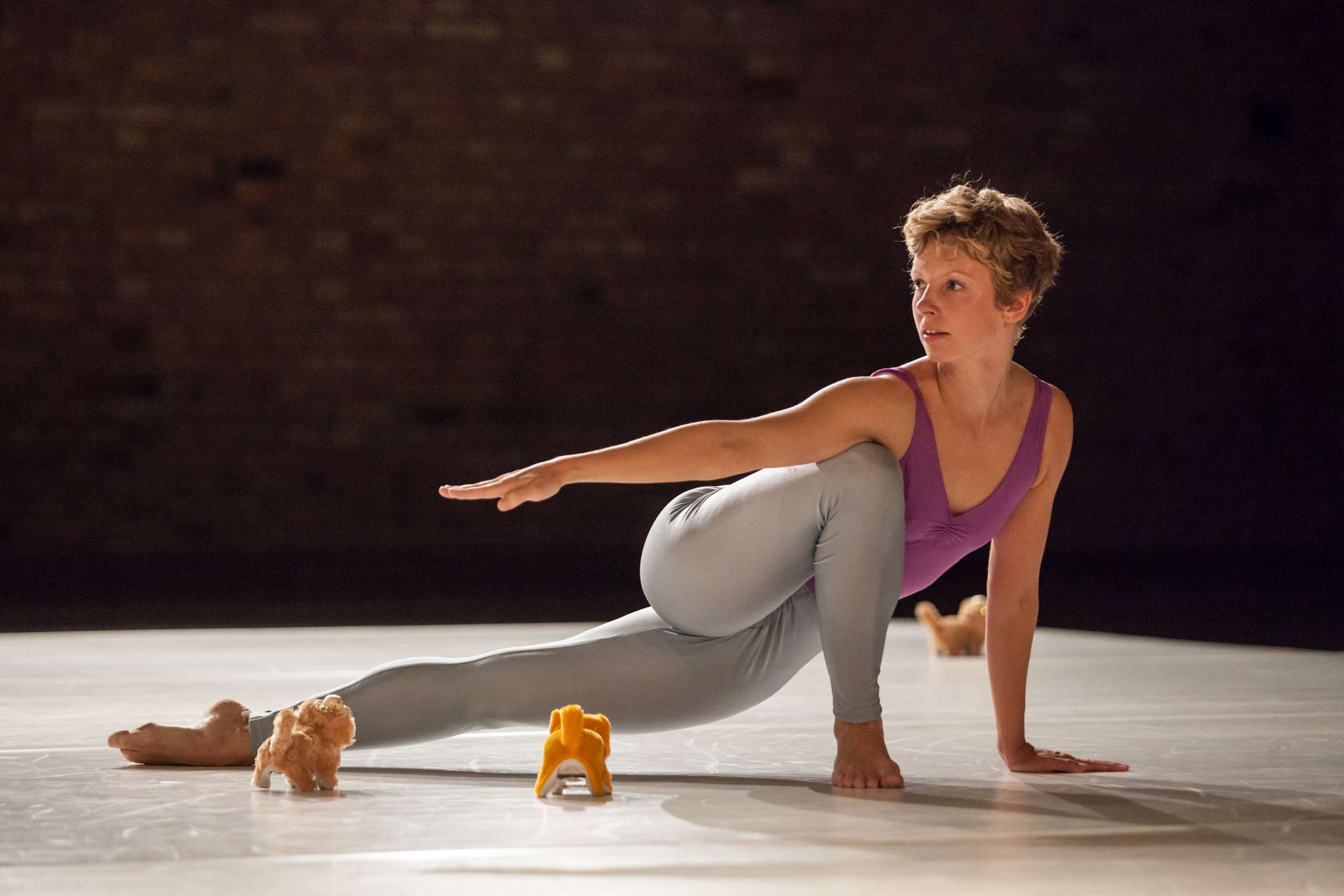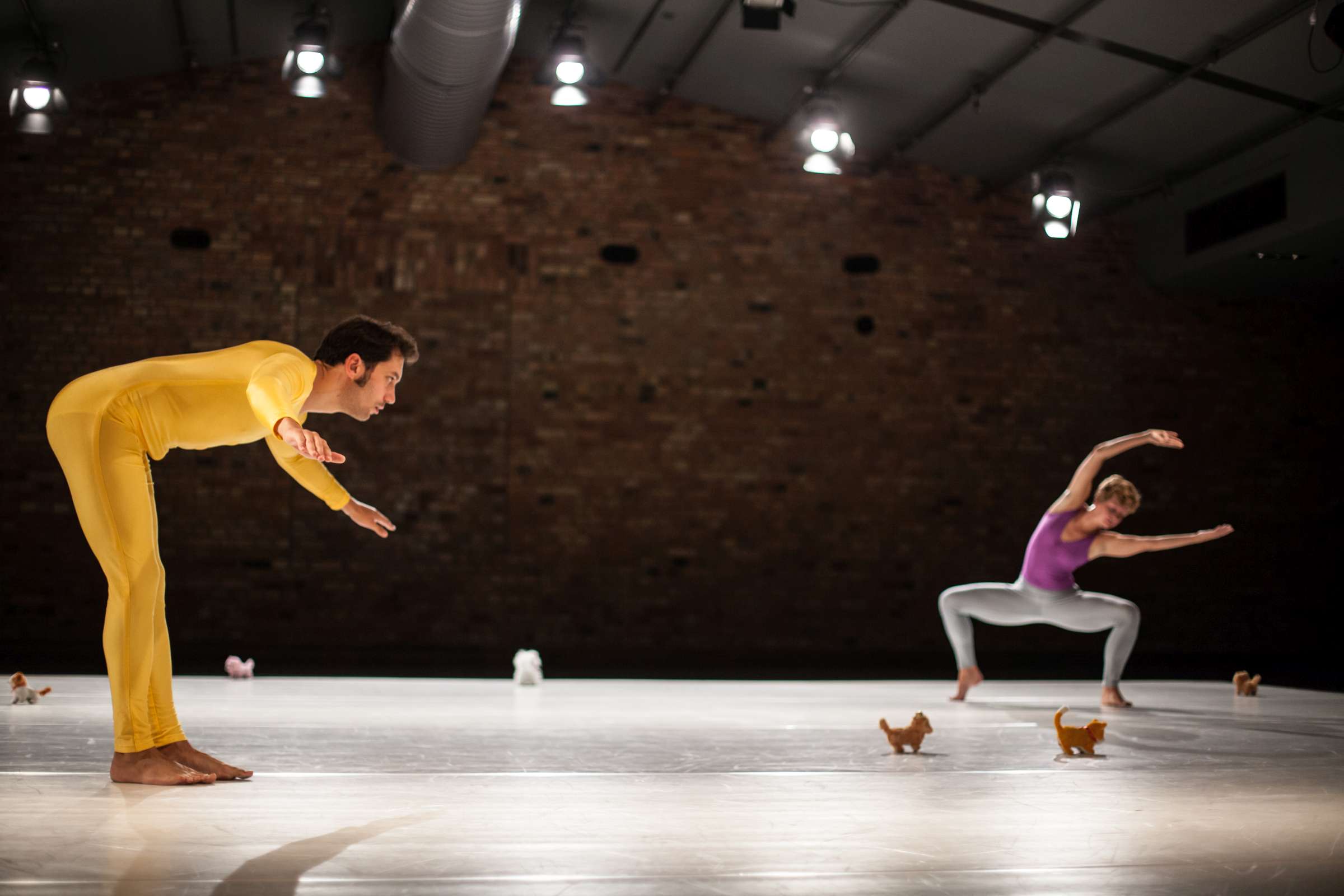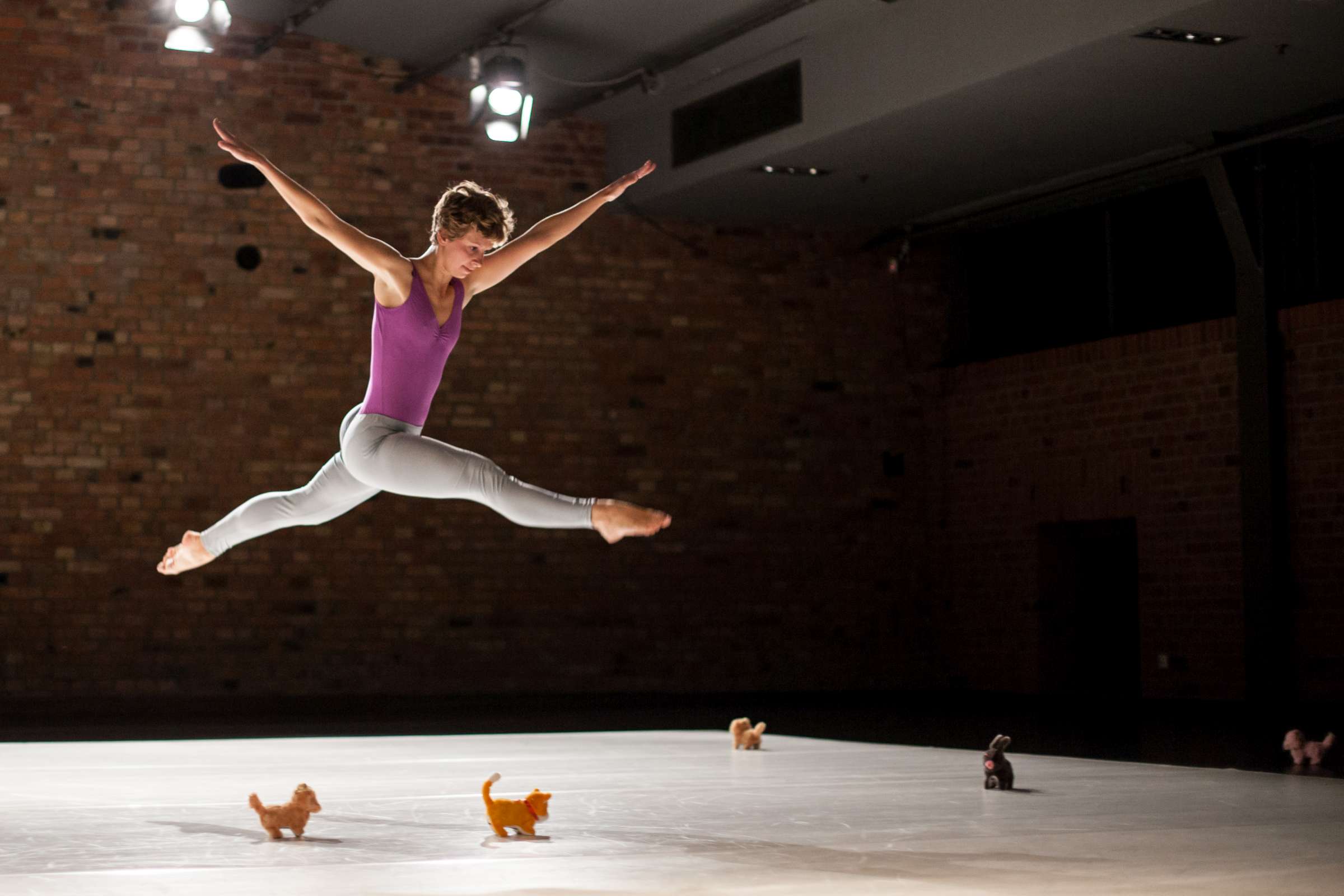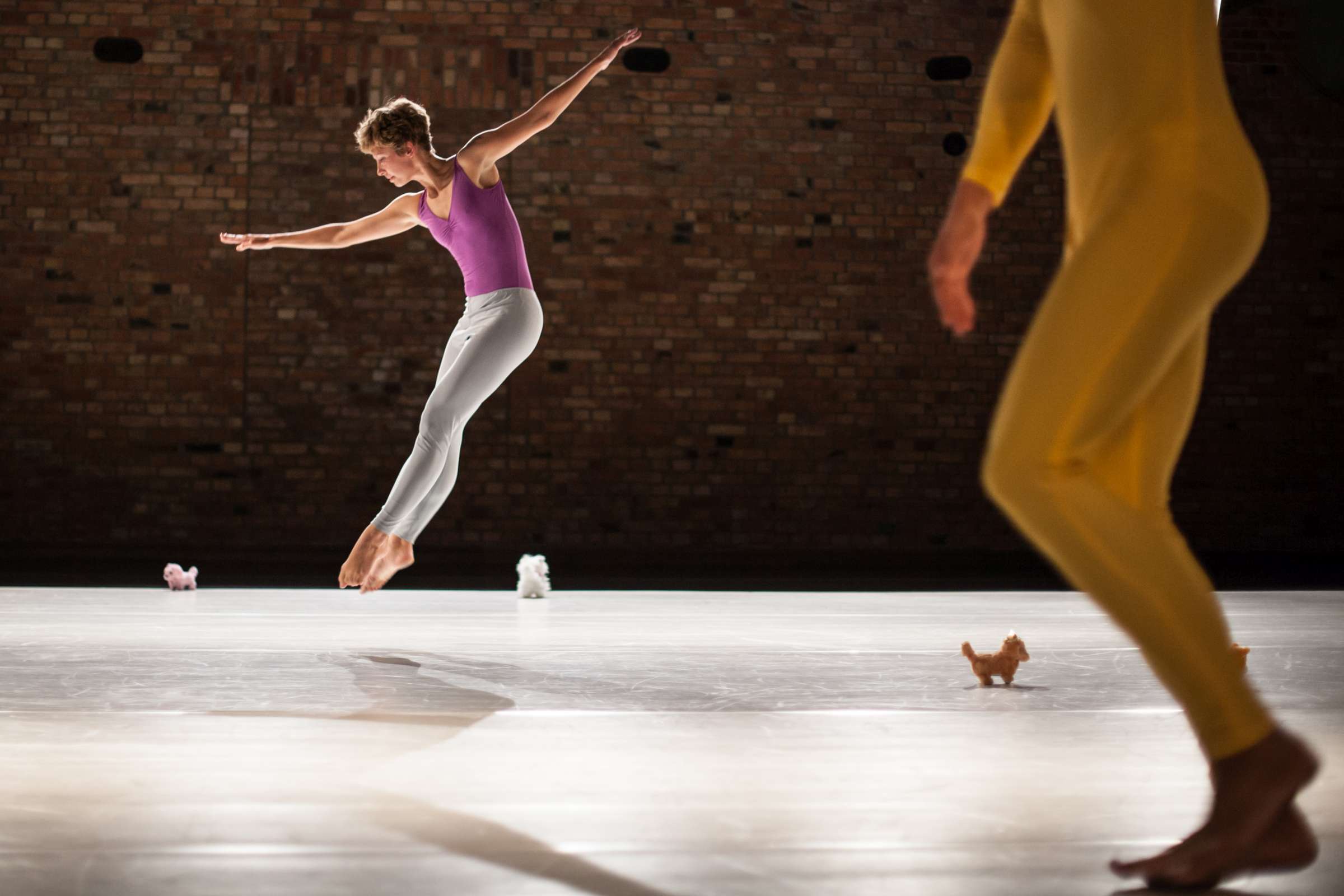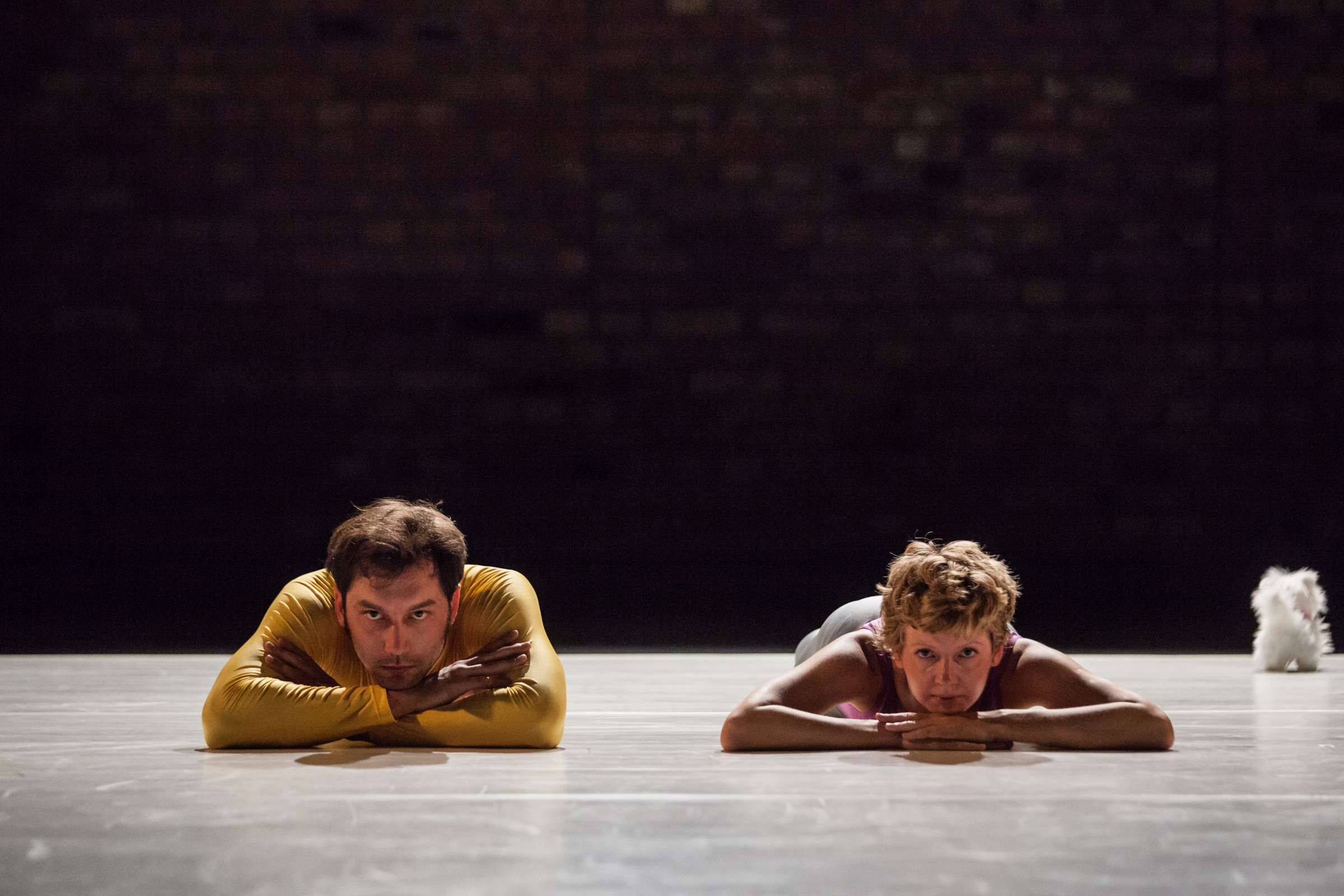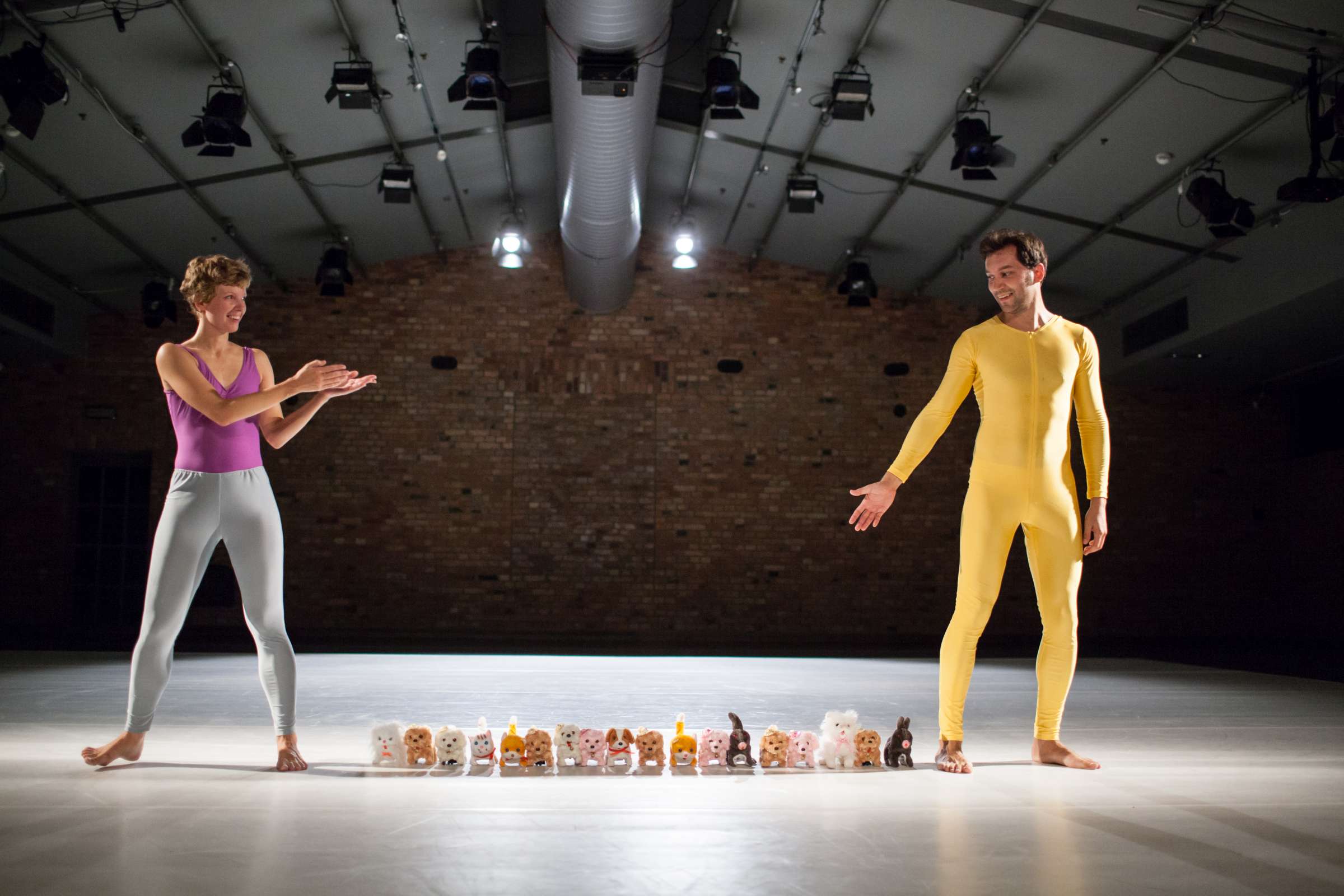My remix will refer to such factors and details and it will be dedicated to Merce Cunningham (1919–2009), an extraordinary figure, the father of the American avant-garde, a trailblazer of „new dance”, later called post-modern dance. He started in Martha Graham’s group, but he decided to look for formality and abstract in movement instead of creating narrative choreographies. And that’s what attracts me most in works by Cunningham – the simplicity of form, its ossification and mathematical precision of movement. Nothing is accidental, although in fact, all was created by chance. I’m going to perform an experiment and refer to the huge choreographic material by Cunningham; I’m going to dance and deal with his dance technique again; take a good look at his admiration for innovation and confront it with myself and my own experiences.
The question I will be referring to: how do today’s young choreographers refer to the watchwords and ideas that emerged “once upon a time in America” together with postmodernism? How and which new technologies would Cunningham use in his works today? I had the opportunity to learn Cunningham’s technique at CODARTS – Rotterdam Dance Academy where I worked with those who met him personally. A return to the Master’s “pure movement” idea will be an intriguing experience for me and this time – I will hopefully explore it more consciously and searchingly, but most of all in less imitative way than during dance classes. Elements and factors as sources, present in the production:
MUSIC / relation Merce Cunningham – John Cage and their chance operations. Music liberated from dance, existing as an independent factor. While collaborating with Cage, Cunningham introduced simultaneity of music and dance into performances; both “tools” were created separately and could not in any way influence each other. The music has its own path and only creates atmosphere. The very first meeting takes place on the day of performance, and as Cunningham used to say: “it was always the most exciting moment.”
SPACE / everything on stage is equally important for Cunningham, the presence of dance in space does not have to be centralized, and their appearance is not directed at audience.
MOVEMENT / every movement may follow the previous one in unlimited directions, as many as the anatomical structure of dancer allows; the beginning, middle and end of movement as well as its logical combination is unclear. Movement is being explored in its pure form, without any narration or drama.
SET DESIGN / is never dominant, like in the street: is one of a kind, modern, but has no influence on the passing people. Cunningham in love with technological innovations, constantly experimented on visual arts.
CHANCE OPERATIONS / Cunningham, inspired by John Cage’ composing method, applied it to choreography. By throwing the dice, he decided on the number of dancers on stage, the order of choreographic parts or movement sequences, directions and repetitions. It was important to apply chance operations in order to get rid of limitations, tastes and physical habits in creative process. Cunningham used them only in the initial phase of his work.
JOHN CAGE / composer and partner of Cunningham, known for his experiments with prepared piano and using everyday articles as instruments. He created chance music, a new vision of composition, borrowed from philosophy of the Far East and Chinese I Ching, the Book of Changes, about random methods of fortune telling.
Iza Szostak – a dancer, choreographer, graduate of the Ballet School in Warsaw and Codarts/Rotterdam Dance Academy in the Netherlands. She won scholarships from the Polish Ministry of Culture, Dutch Corrie Hartong Fonds, Alternative Dance Academy Programme and Solo Project Art Stations Foundation. She was an intern in Jan Febre’s group/Troubleyn, Belgium. She collaborated with Michael Schumacher, Amy Raymond, Felix Ruckert, Guilherme Botelho, Wojtek Ziemilski, Marysia Stokłosa, Anna Holter and others. Her works include: Karmi-go, Feedback, From culture to nature and The glass jar next to the glass jar. Currently she is on scholarship from the international project for young choreographers SPAZIO.
Kuba Słomkowski – he graduated in painting from the Academy of Fine Arts in Warsaw. He also studied at the Bellas Artes Department of Complutence University in Madrid. He won 3rd prize in Samsung Art Master Competition (2009) for his work entitled Music Box Programme. His works include Taxi Music Wheel, Impreza Ciszy, StopAndWalk, Syrena dla Warszawy, Kolacja Na Hucie. A co-founder of Parque-no, and of the duets KubaTwiceImprovise and Dwóch Ludzi z… He uses various media, he is interested in sound and performance art, but also in painting.
Mercier Philip „Merce” Cunningham (1919–2009) – an American dancer and choreographer. In his 70-year career, he revolutionized the approach to choreography and ballet performance. His first solo took place New York in April 1944, with music by the composer John Cage. In 1953 he created Merce Cunningham Dance Company based in New York. In more than fifty years Cunningham created with the company more than two hundred choreographies and eight hundred specific ballet performances. He danced to a very old age, he still performed at the beginning of the 90’s when he was more than 70 years old

